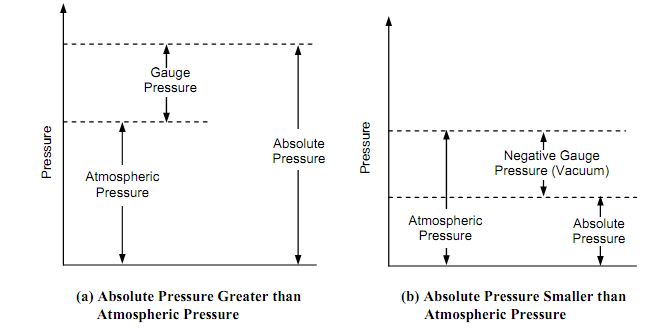Pressure and its Measurement
The pressure p is stated as the common force per unit area applied by the system on its boundary. It is an intensive property, and might be looked upon as the driving force for the volume change. It is a continuum idea. At the microscopic level, pressure might be described as resultant from the impacts of particles on the wall. Such impacts give rise to a force that is macroscopically measurable, and in the continuum vision this force is considered to be uniformly dispersed over the wall, not concentrated at specific points.
The pressure of a system is frequently measured with a gauge by using the atmospheric pressure as the datum. In such a situation, when the pressure is above atmospheric it is termed as gauge pressure, as when it is below atmospheric it is termed as the vacuum pressure. In engineering computations, though, we should use absolute pressure.
The relation among gauge, vacuum & absolute pressures are given by the two equations shown below:
Absolute pressure = Atmospheric pressure + Gauge pressure
Absolute pressure = Atmospheric pressure – Vacuum pressure
Figure shown below describes the relationship among the absolute pressure, gauge pressure, atmospheric pressure, and vacuum.

Figure: Relationships among Atmospheric Pressure, Absolute Pressure, Gauge Pressure & Vacuum
The following gives few conversion factors for units of pressure as follows:
1 bar = 105 N/m2
1 pascal (Pa) = 1 N/m2
1 standard atmospheric (atm) = 760 mm Hg
= 1.013250 bar